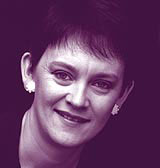Tools of the trade or pretty packaging?
What clients want is quality thinking and rigorous processes. Do they really care how design consultancies brand their offers?

Every design consultancy has its own way of doing things. Some adhere more rigorously to their approaches than others. But, for the most part, these tried and trusted models – sometimes seen as brands in their own right – become integral to how the business is run.
To what extent, though, do clients buy into such thinking? Moreover, in recessionary times, when competition for all kinds of design work is intense, can consultancies make any marketing capital out of promoting a particular skill, service or specialist resource? In short, are branded offers anything to shout about?
When Nucleus completed a brand strategy programme for Cable & Wireless (DW 14 February), it was keen to highlight the role of its BrandDueDiligence service in the project. Nucleus managing director Peter Matthews believes that ‘robust methodologies’ enhance a consultancy’s credibility.
‘Design consultancies need to be able to talk to the [client’s] board about hard business issues, not just the look and feel of a brand,’ says Matthews. ‘More often than not, branding decisions are subjective and taken on the fly. [We] use a diagnostic tool [to be] as objective as possible in terms of evaluating a brand’s relative strengths and weaknesses.’
BrandDueDiligence is tailored to brand valuation issues arising from mergers, acquisitions and divestment activity. But it is not the only branded service Nucleus offers. Matthews’ general view is that such a suite of services makes the consultancy more ‘business-like’.
In terms of attracting new business, branded solutions are ‘points of discussion’, Matthews says. He adds, ‘It’s important to have a platform to deliver insights and relevant stories to talk to clients about.’ Once a project is underway, these tools can be used to ‘define what success looks like, and you can measure the benefits of that.’
So how is this regarded on the client side? Cable & Wireless vice-president, marketing services Mark Davis says, ‘I would encourage the use of branded tools. They offer a clear, pragmatic roadmap that is easy to understand and can articulate specific deliverables. It makes it easier to manage the process of informing and influencing stakeholders within the [client’s] organisation. Senior people feel more comfortable with solutions in a box.’
While Davis doesn’t want to lose the ‘flexibility’ that designers bring to the table, he thinks ‘good project management’ is what clients find reassuring about branded processes. ‘It’s what we expect from the ‘big five’ groups and that’s no different when buying from a brand consultancy,’ he adds.
Some degree of client handholding is evident in Elmwood’s Step Change product too. Elmwood chairman Jonathan Sands says it began as an in-house ‘creative thinking tool’, but is now offered as a strategic service to clients.
Downsizing has stretched many clients’ resources, Sands suggests. As a result, briefs have become ‘less rigorous’ as the client is effectively ‘subcontracting strategy’. Through Step Change, the consultancy can get involved ‘further up stream’, helping clients to generate ideas ‘before the product is a gleam in the marketer’s eye’, he says.
Sands believes a branded offer has enabled Elmwood to adopt fresh positioning as ‘an ideas company’. He says, ‘The concept has made a major contribution to growth over the past two years. Without it, our London office would not have been a success.’
Glen Gribbon, marketing manager at drinks company Kyndal, endorses the approach. He says, ‘Our relationship started because of Step Change and Elmwood won design work on the back of it. As a model, it does encourage inclusive working and I would look for similar processes in future. It shows a consultancy is thinking about brand dynamics.’
However, it takes time to develop a standalone product. Step Change came through several iterations and was tested for two years with ‘friendly clients’ before being rolled out. But having ‘genuinely differentiated product’ is worth it, says Sands, because ‘clients’ greater buying power [means] price premiums cannot be justified without offering something extra’.
BamberForsyth Fitch’s name generation service, Namebrains, operates more like a sub-brand. BamberForsyth Fitch director Clare Fuller says the benefits are that clients can see ‘quickly and easily’ that the consultancy has a ‘specific focus, a rigorous programme and a track record’ in naming. In some sense it’s also a way of avoiding the hard sell. ‘Not everyone wants to buy design work as well,’ she adds.
However, Fuller says any sub-brand ‘needs to complement the core business’ and doubts whether further segmentation would be of any value. ‘We have a limited marketing spend and wouldn’t be getting most bangs for our buck if we spread marketing over several sub-brands,’ she says.
The prevalence of branded offers seems to be a response to increased competition and the fact that design is becoming more like other forms of consultancy. Sands suggests that developing a specialist service cannot be done in piecemeal fashion. ‘It’s not a one-off investment,’ he says. ‘Lots of branded jargon is met with cynicism and scepticism. Clients are bright people. They’ll find out which [offers] are selling them short’.
What is uppermost in clients’ minds is effective delivery and good project management. Whether branding a tool or service makes any difference is a moot point. Davis is full of praise for the approach taken by Nucleus with Cable & Wireless, but says tellingly, ‘I don’t know what it’s called. It’s the process that’s important.’
-
Post a comment




